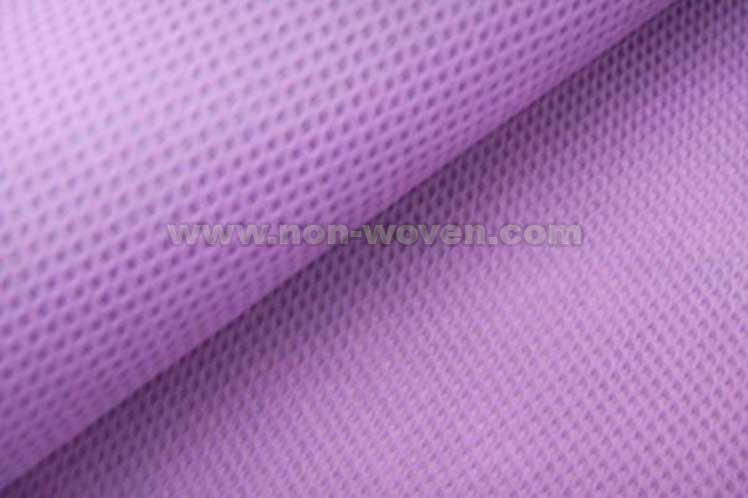Introduction
geotextile fabric is a special type of fabric that has been designed for use in a variety of applications. It is made from a range of different materials, including polypropylene, polyester, and nylon. The fabric is then bonded together using a process known as heat bonding.
The fabric is most commonly used in the construction industry, where it is used for a variety of purposes, including drainage, reinforcement, and filtration. However, there are many other non-woven geotextile fabric uses that you may not be aware of.
In this article, we will explore 11 of these uses in detail. By the end, you will have a better understanding of the potential applications of this versatile fabric.learn more(wikipedia)
Section 1: Non-woven geotextile fabric is a versatile material with a wide range of applications.
Geotextile fabric is strong enough to hold back soil and sediment while allowing water and air to pass through it. It is highly resistant to tearing and the effects of the elements, making it an ideal material for outdoor applications. Furthermore, the fabric is able to resist UV radiation and chemical erosion. For these reasons, geotextile fabric is becoming increasingly popular in the construction and engineering industries. Its ability to flex and stretch makes it a suitable material for a variety of projects and applications. Its versatility also makes it one of the most cost-effective options for many projects.
Section 2: It is often used in construction and engineering projects.
Non-woven geotextile fabric is most commonly used in the construction and engineering industries. It is used for a diverse range of projects, from bridge repair to road construction. The fabric is laid over the ground to reinforce weak soil, stabilize slopes, and separate different layers of soil. It is also used as a drainage layer, filtering water and preventing erosion. In addition, the fabric helps retain moisture in the soil, reducing the need for irrigation. The fabric can also be used in landscaping projects, providing an attractive decorative finish and protecting soil against water erosion. Non-woven geotextile fabric is also used in road construction projects, as a temporary surface to protect the underlying material.
Section 3: Some of the most common uses for non-woven geotextile fabric are as follows:
1. To reinforce weak soil:
Non-woven geotextile fabric strengthens weak soil, meaning it can support the weight of vehicles, walls and building foundations. This gives engineers and construction workers the confidence to construct on terrain that would have been too risky previously.
2. To stabilize slope surfaces:
To ensure a steady surface and reduce the risk of slope failure, geotextile fabric is laid onto the incline. This reinforces the soil, meaning it can support the weight of vehicles, buildings and homes, ensuring the stability of the slope.
3. To separate different layers of soil:
Different layers of soil can affect drainage, so it is important to separate them with a geotextile layer. It is an effective way to keep water and nutrients in place while preventing cross-contamination between different types of soil. This can also help to reduce the amount of sedimentation in waterways.
4. To reinforce weak soil Geotextiles are used to reinforce weak soil.
A geotextile layer is laid over the weak soil and then covered with a layer of sand or gravel. This creates a stronger layer of soil, capable of supporting the weight of the vehicles, walls and foundations that are placed on it. Geotextiles increase the bearing capacity of the soil, making it ideal for the construction of roads and buildings.
5. To stabilize slope surfaces Geotextiles are also used to stabilize slope surfaces to prevent earthquake-induced landslides and slope failures.
The geotextile is laid on the slopes, after which sand or gravel is used to cover it. This creates a uniform surface and provides additional stability. Geotextiles can also be used to reinforce the soil and prevent erosion and settling.
6. To separate different layers of soil Geotextiles are used to separate different layers of soil.
This keeps different types of soil from interacting with each other, preventing cross-contamination and the development of sinkholes. In addition, the use of geotextiles can help to reduce the amount of sedimentation in waterways. The geotextile fabric helps to reduce the force of the water on the surface of the soil, preventing it from eroding.
7. To serve as a drainage layer
Geotextiles are also used to create a drainage layer. The fabric is laid over the soil and then covered with gravel or sand. This prevents water from pooling and creates a uniform surface that helps to improve drainage. The geotextile fabric will also help to retain any nutrients in the soil, further improving drainage. Section 8:
8. To filter water
Geotextile fabric can be used to filter water. The fabric allows water to pass through but helps to capture any contaminants. This is particularly useful for stormwater management. The fabric helps to filter out debris and sediment, preventing it from entering the water system. Section 9:
9. To prevent erosion
Geotextile fabrics can also be used to prevent erosion. The fabric is laid over the soil, helping to hold it in place. This prevents wind and water from eroding away the soil. In addition, the fabric will help to reduce the amount of sediment and debris that is washed away in the event of a storm.
10. To provide moisture retention Geotextile fabrics are also used to retain moisture in the soil.
The fabric helps to prevent the soil from drying out, reducing the need for irrigation and increasing crop yields. The fabric also prevents weeds from germinating in the soil, further increasing the productivity of agricultural land.
11. To line drainage systems Geotextiles can be used to line drainage systems, helping to filter and capture contaminants before they enter the water system.
The fabric is laid along the bottom of the drainage channel, trapping sediment and debris and allowing clean water to continue downstream. This helps to reduce pollution in the area while maintaining an efficient drainage system.
A growing concern due to the increasing effects of climate change is flooding and soil erosion in vulnerable areas. To help protect against these forces, geotextiles can be effectively employed. The strong fabric assists with soil reinforcement and stabilization, helping to reduce wash away in heavy rains. Additionally, it can act as a filter to trap environmental contaminants from entering ecosystems.

